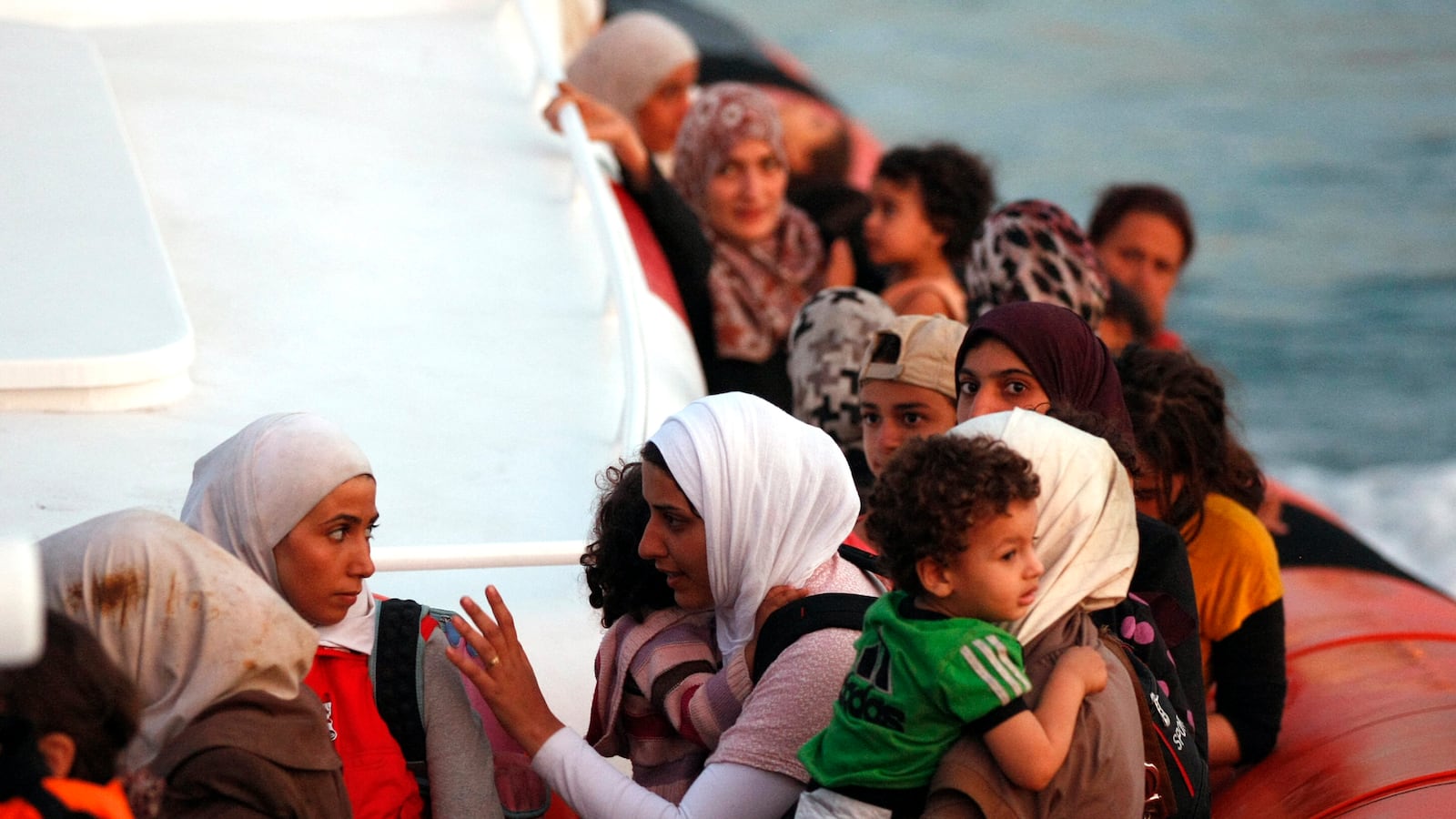PALERMO, Sicily—The picturesque Sicilian hilltop village of Sutera, just 50 miles south east of Palermo, has been a dusty ghost town ever since the locals started dying off and the younger generation started moving away about a decade ago. In its heyday in the 1960s, the village had a population of more than 5,000 people, but the town has been losing residents at a steady rate of about 100 people a year. More than 50 percent of the homes are vacant, and most of the stores shuttered long ago. Last year, the average size of an elementary school class had just six students.

But in the last six months, Sutera has started what could be considered a resurrection of sorts, springing back to life, thanks to an initiative by a group protecting the rights of asylum seekers called SPRAR. They have convinced the Sicilian government that migrants and refugees might just be the solution for repopulating Sicily’s dying towns. Villages like Sutera get government grants to turn over abandoned houses and vacant stores to Italy’s newest residents who are mostly Syrian, Egyptian, Palestinian, Afghani, and Sub-Saharan African refugees.
“Ali” is one such Syrian refugee making Sutera his new home. He fled Syria last year and landed on Lampedusa, off the Sicilian coast, last summer. He attempted to join his extended family in France before being turned away twice trying to get to Paris. Because he applied for political asylum in Italy, he is supposed to remain in the country (and refrain from using his name in the press) until the lengthy paperwork is completed. He heard about the Sicilian project and returned to the island. After he was given a home to repair, he decided to stay even longer. He and three other refugees—a Palestinian and a Nigerian—are now fixing up two abandoned villas in Sutera, using tools and supplies donated by the local government, while they wait for their wives and children to join them. “We are going to try to make our lives here,” he told The Daily Beast. “Sometimes opportunities present themselves in unexpected ways, and this is an opportunity for us.”
Sicily has a long history as a cultural crossroads for people moving between Arab countries, South Asia, the Middle East and Europe. The island was under Arab rule between 827 and 1061, at a time when the Arab world was far more advanced than any of Sicily’s previous rulers. The period was arguably the peak of the island’s cultural enlightenment, and its multi-cultural history is still present via architecture, cuisine and local dialect. Many of the grand basilicas in Palermo, Messina and Cefalu are topped with red domes that still have Arabic inscriptions carved into the walls, left in place when mosques were converted to churches. Sicilian dialect is filled with Arabic words like mischinu (taken from the Arabic word miskin), which means a poor person. Many older Sicilians still feel they are more connected to their diverse Arabic and Middle Eastern past than to modern Europe.
The new Sicilians are far more ethnically and religiously mixed than past inhabitants, and local Sicilians have welcomed them into their communities. “Our towns are at risk of dying completely without this repopulation by refugees,” says Pietro Alongi, a social service worker who is helping the integration process in Sutera. “We need them as much as they need us.”
But not everyone coming through Sicily sees the value of staying. Almost every day, hundreds of migrants and refugees are moved from Sicily to the Italian mainland where they are housed in makeshift camps until they can either leave legally or escape, often as Italian authorities turn a blind eye. Over the weekend, 111 Ethiopians jumped the fence at a Messina refugee camp and disappeared. Only eight were caught. The rest are undoubtedly on the Italian mainland already, heading north. In March, 40 Syrian refugees escaped from housing in Florence. Most were reportedly picked up by family members and friends in cars and driven to the border. “We are going to try to get to Germany,” a Syrian woman who says her name is Ada, told The Daily Beast while waiting with her two young children to board a dedicated refugee flight from Palermo to Rome this week. “We have enough money to start a new life, but we have to get there first.”
Even if refugees wanted to stay in Italy, there soon won’t be space to house everyone at the rate they are arriving. Since the beginning of the year, 22,000 mostly Syrian, Ethiopian and Egyptian refugees have come through Sicily and its tiny island of Lampedusa to seek asylum. Most want to move to Sweden, where legalized Syrian refugees are invited to bring their families, or to Germany, which has a large Syrian population. In the last six months, Milan authorities estimate that more than 4,000 Syrian refugees have crossed through the city’s train station heading north. According to the city’s Welfare attaché, Piefrancesco Majorino, 70 percent are headed to Sweden, 21 percent to Germany. More than 13,000 people have requested political asylum in Italy since the beginning of the year, up 140 percent over last year, according to Italy’s interior ministry.
Sicilians may have a long history of acceptance and tolerance, but not all Italians welcome the refugees. Projects aimed at helping migrants are facing renewed political opposition from within the country. Last year, under prime minister Enrico Letta, the Italian government began an initiative called Mare Nostrum (Our Sea) together with border control group Frontex meant to save lives of migrants and refugees by dispatching Italian naval ships to pluck rickety fishing boats out of the sea before they crash onto Italian shores. The project, which costs Italian tax payers around 9 million Euro every month, was started after more than 350 migrants died when their boat caught fire and sank off Lampedusa last October. More than 60 human traffickers have been arrested through the project and prosecuted in the Italian court systems.
The project has saved countless lives, but the country’s center right parties are now demanding that it be halted. Frontex, which is supposed to be an equal partner, has only contributed 13 million Euro since the project began last November. Forza Italia parliamentarian Maurizio Gasparri called the program a “taxi service” for “merchants of death” making it easier for human traffickers to do their work.
Even facing such an uncertain future, the refugee crisis shows no sign of abating. The Italian navy estimates that more than 600,000 refugees and migrants are waiting in North African ports in what has been described as a “biblical exodus”—all headed for Italy.





